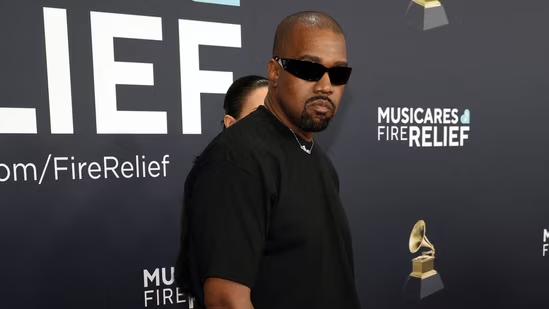Fashion has been a part of human life since ancient times. As people evolved, fashion followed into the same footsteps. Decade after decade we see the emergence of new trends, how and why they come up and how they affect our lives. In this article, we will talk about fashion starting from the 1900s till present day, the factors responsible for their emergence and the impact it created on future trends. This article will become your decade-by-decade guide and take you through the various styles of clothing that have existed years ago.
Faishon- Decade by Decade
1900s
The fashion trend that was predominant in the 1900s was the S-shaped silhouette. What this silhouette did was push your hips back and your chest upward and forward, hence giving your body a sort of S-Shape. But as the decade came to an end, women started dressing in a way that enhanced their natural features. During the day, women wore long dresses that went from their necks to the floor and had full sleeves. For the night gowns, a similar silhouette was adopted but with a deep neckline and short sleeves. With the emergence of sports in the beginning of the 20th century, fashion was inculcated in that field as well and new clothing styles were created for sports like golf, cycling, tennis and more.
Also visit : Megan Thee Stallion Documentary Review: Now Streaming on Amazon Prime Video
1910s
The beginning of this decade was marked by getting rid of the corset based and S-shaped silhouettes and women were now dressing more naturally. Some designers who brought this change were Paul Poirer, Georges Doeuillet, Jacques Doucet and Lucile (Lady Duff Gordon). These designers highly encouraged fashion that fits women more naturally instead of highlighting only certain parts of their body. This led to the re-emergence of empire dresses that were popular in the beginning of the 19th century. This decade began with the rise of orientalism. In 1911, Poiret created “harem” pantaloons and The Fancy Dress costume. This year also saw the creation of the “hobble skirt”, but they became unpopular as moving in them was next to impossible. As we can see, practical clothing was the need of the hour and this need increased even more due to the first world war.
1920s
These years are also referred to as the Age of glamour, glitz and jazz. But another side of this decade also expressed the importance of simple and practical clothing. After the war ended, women realised that simple, minimalistic clothes are way more comfortable than the ones they used to wear. From then on, the clothes representative of the Victorian era were out, and comfort was in. A new trend known as “the flapper look” was born, which paved the way for a comfortable and androgynous style of dressing. With dropped waists and hemlines just above the knee, people started to vire feminine fashion differently. The credit for this trend goes to the iconic Coco Chanel.
Another trend where feminine fashion was given a more romantic look was created by Jeanne Lanvin, known as the “Robe de Style”.
Sportswear became more and more common and acceptable each passing year for both women and men. The evolution of women’s sportswear was done by very few designers like Coco Chanel, Schiaparelli and Jean Patou.
1930s
The androgynous look from the last decade was now fading, and the feminine silhouettes were making a comeback. A drape of fabric over the body, called by the name “bias cut” was now the new trend. A lot of fashion in this decade was also inspired by Hollywood actresses of that time such as Better Davis, Greta Garbo, Marlene Dietrich and many more.
1940s
This decade was marked with the beginning of the second world war which resulted in a shortage of clothing materials. Fashion again had to become practical, which meant uniforms for men and women who were serving in the war and utility clothes for everyone else. Padded shoulders, hemlines below the knee and cinching around the waist were commonly seen during this decade. The less amount of material led to the creation of the bikini in 1946 by designer Jacques Heim and Louis Reard. Fun fact about bikinis, they were originally known as ‘Atome’ because they were as small as atoms! The bikini undoubtedly had an explosive impact on the fashion of this decade.
After the war ended, Christian Dior stepped into the game and created something that the people had never seen before. His design called the “New Look” sparked something new in the fashion industry. His extensive use of fabric created a luxurious and elegant look like no other, completely opposite to how people were making clothes with the limited resources available during war time.
1950s
The designs by Christain Dior had ignited a new fire in the hearts of women. After long years of having limited access to clothing sources, women wished to dress in a way that highlighted their femininity. As a result, we saw the emergence of cinched waists, lavish silhouettes and full dresses and skirts. Even though “New Look” was still popular, it could not stop the emergence of new silhouettes, which were different from itself. A great example of this new, straight and slim silhouette is the ‘Sack dress’ created by Cristobal Balenciaga. This design hit the fashion industry like a truck, and for all the right reasons. Balenciaga created silhouettes that could not be foreseen by anyone, especially after Christian Dior’s designs. The designs by both Dior and Balenciaga stood at opposite ends of a spectrum; the former created dresses with more corset style silhouettes while the latter created boxy dresses with broad shoulders.
Coco Chanel was another contender in this race. She introduced her own signature slim look in 1954 consisting of straight skirts and boxy jackets.
1960s
The beginning of this decade carried the fashion legacy of the last decade itself. The feminine look in fashion stayed afloat thanks to designers like Balenciaga and Hubert de Givenchy and style icon Lady Jacqueline Kennedy. Around 1965, we see the emergence of the “Swinging Sixties”. This phenomenon focused on music, fashion, youth and all things fun. There was a need for modern clothing designs, designs that made women feel liberated, fun and daring. This task was done by designers such as Paco Rabanne, Mary Quant, Pierre Cardin and more. The first iconic design created under the Swinging Sixties was that of the ‘miniskirt’, made by Mary Quant and Andrè Courregés.
Efforts were made by Mary Quant and Yves Saint Laurent to provide women with sexual liberation via clothing with the creation of trousers, hotpants, and the first ever tuxedo for women. As androgynous fashion grew, a change in the look of models was also on the rise.
We also saw the emergence of new materials such as lycra, acrylics, polyesters and more. It was believed that people wanted to see ‘futuristic fashion’. This idea is reflected in the “Moon Boots” created by Courregès and the “12 unwearable dresses” by Rabanne. Designer Pierre Cardin upon taking inspiration from pop culture experimented with geometry, shapes and colours, leading to the creation of his iconic piece “Cosmocorps”.
Towards the end of the decade, mainstream fashion was sidelined and hippie fashion was slowly becoming the norm.
1970s
Picking things up from the final years of the last decade, hippie fashion was still relevant, especially because of the prairie dresses that were being included in high fashion. Crocheting, patchwork, embroidery, knitting and synthetic materials were now popular, also becoming the reason for this time period being known as the “Polyester decade”. A few years later, the hippie fashion walked out the door and in came the disco themed fashion.
A lot of importance was again being given to the sexual freedom of women, so much so that Yves Saint Laurent created a whole collection with the name “Libération”.
Sportswear made yet another appearance into women’s fashion, and this time it was popularised by Norma Kamali’s pieces like the ‘Sleeping bag coat’ and the parachute-like dresses and jumpsuits.
1980s
This decade was all about expression of individuality. People began to realise that there was no need to be scared to express who they really are, and fashion was the ultimate means of expressing themselves. Bold colours, excessive styles, and a lot of accessories became more and more common. Modern day designers like Jean-Paul Gaultier, Versace, Karl Lagerfeld were actively creating designs during this time.
Fitness became a new trend due to a few Hollywood Hollywood movies. People now wanted to wear off-shoulder sweatshirts, leggings, spandex, headbands and more.
Another thing that heavily influenced fashion was the music of this decade. Pop music was playing in every house, and the outfits in the music videos were something that everyone wanted. Doc martens, funky accessories, glitter makeup, big hairstyles, and many other things along the same lines were now trendy.
Women were not restricted to their houses anymore; they had jobs that required them to look professional. High heels, jackets with padded shoulders and stand-out accessories were created thanks to designers like Mugler and Ungaro. Power suits also became popular due to big personalities like Princess Diana, Margaret Thatcher and more.
1990s
Supermodels were at their peak in the beginning of the 1990s. Some of the most famous models of that time were Naomi Cambell, Linda Evangelista, Cindy Crawford and Christy Turlington. They are known as the ‘original supermodels’ and are heavily respected to this day.
The legacy of sportswear was carried onto this decade as well. Young women were obsessed with big sweatshirts with biker shorts.
The approach towards fashion became largely minimal, following the ‘less is more’ narrative. The biggest trend of the decade was slip dresses.
On the other hand, Grunge fashion was coming to life, thanks to Marc Jacobs and Alexander McQueen.
The film and music industry yet again had a huge impact on the fashion trends of that time, especially Clueless, The Spice Girls, Brittney Spears, The Fresh Prince of Bel Air and more.
2000s
The 20th century was finally here and what came with the 21st century was a massive wave of globalisation. Good quality yet affordable clothes now became easily accessible everywhere around the world due to fast fashion. The style icons of the time were not supermodels, but TV characters from shows like Gossip Girl, One Tree Hill, The OC and more.
Fashion saw an evolution due to the adoption of new technology. Movies like ‘The Matrix’ managed to inspire famous designers to create full collections with just the colour black. But things quickly changed after the tragedy of 9/11. People started wearing simple, casual clothes, and the most commonly worn item was jeans.
Sneakers also became the new thing, especially Nike’s Air Jordans and Adidas’ Yeezys. Tracksuits also became popular once stars like Paris Hilton, Jennifer Lopez and Brittney Spears started wearing them.
2010s
Clothes that were originally meant for working out now became a part of everyday clothing. The era of tracksuits also continued.
The 2010s also saw the emergence of influencers and bloggers who now dictated fashion trends instead of celebrities. Ideas of minimalism were slowly diminishing and maximalism made a return. This was facilitated by designer Alessandro Michele who worked under Gucci.
A lot of importance was also being given to sustainability and the impact of the fashion industry on the environment.
2020s
In the years that we have seen, Covid had a major impact on our fashion choices. Since people were always at home, a lot of effort was not put into the type of clothes one should wear. After that, minimalism made a comeback and the Y2K aesthetic which was popular in the 2000s became popular among the youngsters.
I hope this article gave you a brief idea about the deep history of fashion. Just like us humans, fashion is also always evolving.








